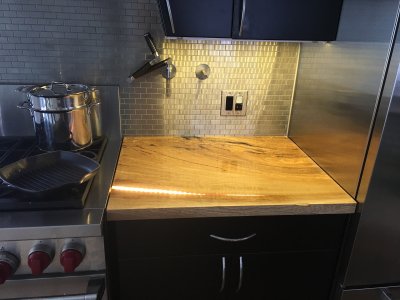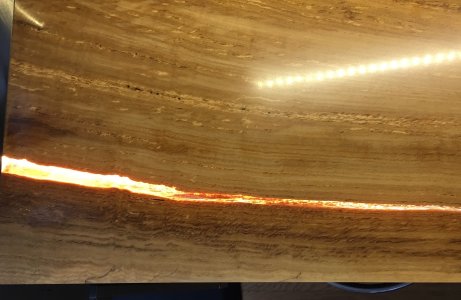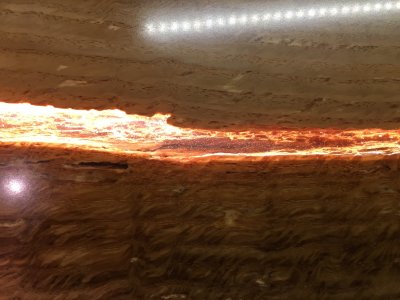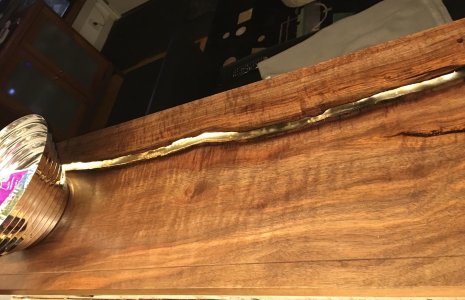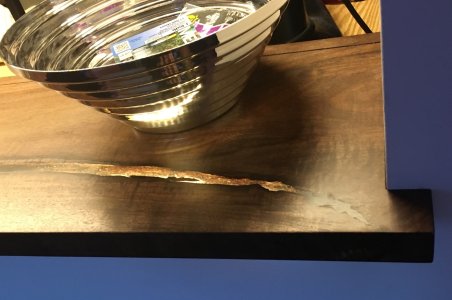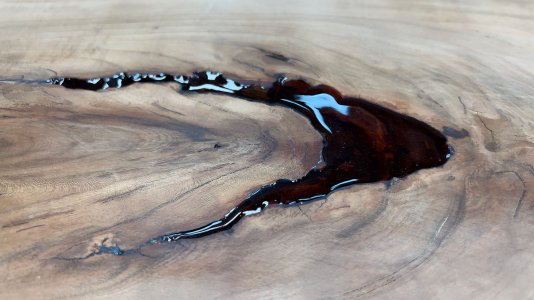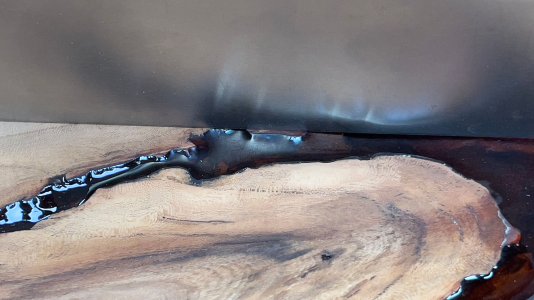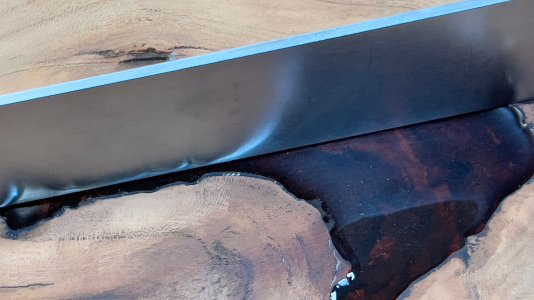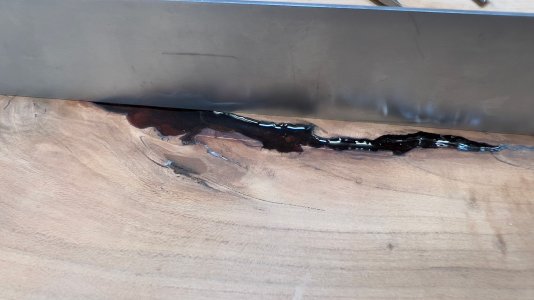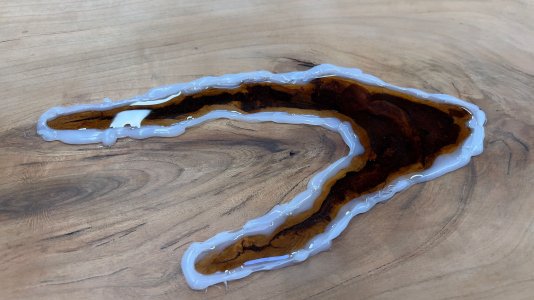smorgasbord
Member
- Joined
- Jan 7, 2022
- Messages
- 1,410
I begrudgingly decided to fill a hole in my cherry slab desk project with epoxy:
1) First used a thin epoxy (Smith's CPES) that I've used many times before for other projects to coat as much of the wood inside the hole as I could reach. It's very thin, so it flows well.
2) Then a few days later (and ago) I poured some TotalBoat ThickSet (½"-2") into the hole, and kept refreshing it as it sunk. Eventually, it seemed to stop sinking and I was running out of working time anyway.
3) So now a few days later, the epoxy is nice and clear and no bubbles, but has apparently sunk below the top. See pictures:
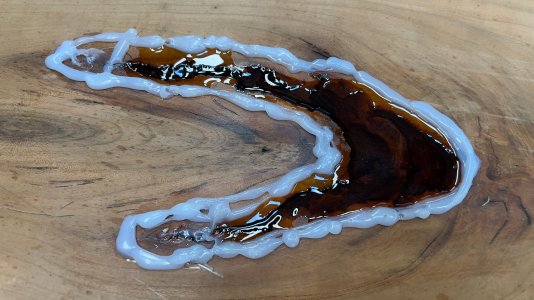
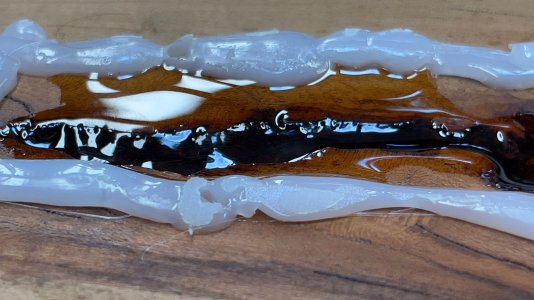
I used hot glue to build a wall so that I could pour above the table top (which you can see I did), but still that close-up area shows a depression of at least ⅛", maybe more.
So, I need to pour another layer.
I'm looking for ideas/suggestions/tips on what to do. For instance:
• Do I just pour another layer?
• Do I need to sand first?
• Should I remove the hot glue, sand to flat, then hand sand the depressed areas, then re-hot glue and re-pout?
• Since I don't have the Fantom version of the epoxy, I think I can pour a pretty thin layer, but not sure if this is too thin.
• Since this is clear, I don't have the benefit of an opaque colored layer hiding what's underneath.
• What else?
TIA
1) First used a thin epoxy (Smith's CPES) that I've used many times before for other projects to coat as much of the wood inside the hole as I could reach. It's very thin, so it flows well.
2) Then a few days later (and ago) I poured some TotalBoat ThickSet (½"-2") into the hole, and kept refreshing it as it sunk. Eventually, it seemed to stop sinking and I was running out of working time anyway.
3) So now a few days later, the epoxy is nice and clear and no bubbles, but has apparently sunk below the top. See pictures:


I used hot glue to build a wall so that I could pour above the table top (which you can see I did), but still that close-up area shows a depression of at least ⅛", maybe more.
So, I need to pour another layer.
I'm looking for ideas/suggestions/tips on what to do. For instance:
• Do I just pour another layer?
• Do I need to sand first?
• Should I remove the hot glue, sand to flat, then hand sand the depressed areas, then re-hot glue and re-pout?
• Since I don't have the Fantom version of the epoxy, I think I can pour a pretty thin layer, but not sure if this is too thin.
• Since this is clear, I don't have the benefit of an opaque colored layer hiding what's underneath.
• What else?
TIA

